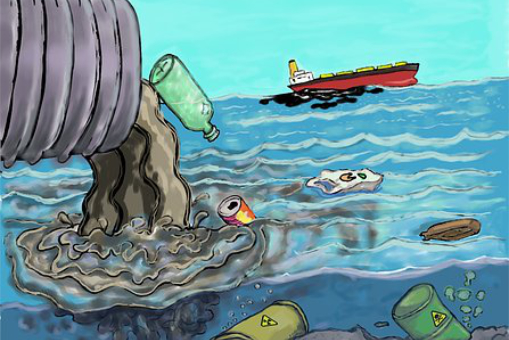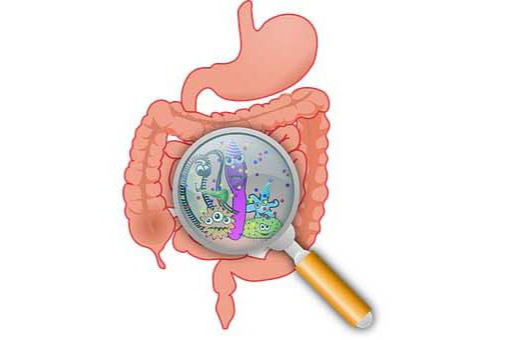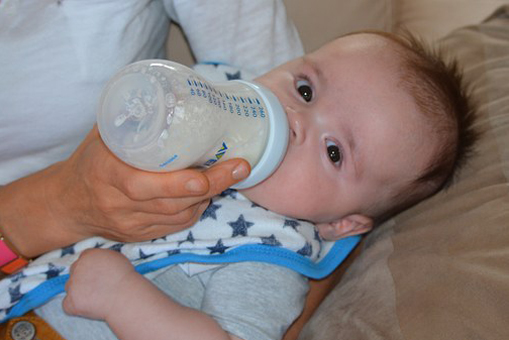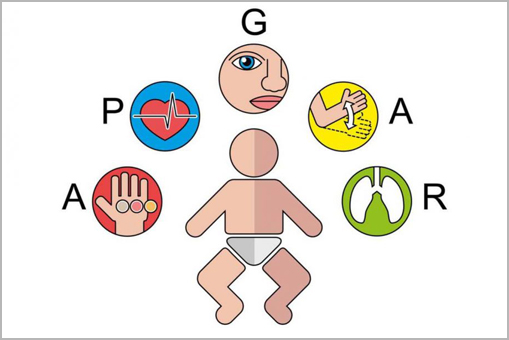We want to create a long-term relationship of trust and health with parents and children
The effect of chemical toxins on infant growth and development
PART I
Introduction
Thanks to the powerful expansion of industrial technologies, globalisation and increasing trade in recent decades, humans and other living beings are increasingly exposed to a large number of chemicals. The number and amount have increased, and constant efforts are being made to evaluate their effect on human health. Some studies assess that they play a part in around 85% of illnesses. The sheer number and variability of the chemical compounds themselves, as well as the length and overall amount of exposure, makes it difficult to estimate their influence. Finally, their effect may vary depending on the specific stage of development at which a person was exposed, with early periods from conception to the age of 1 year being the most sensitive. Exposure to chemical substances at that age is likely to have long-lasting effects.
Chemicals that disrupt the endocrine system
Endocrine disruptors are chemical compounds that can imitate hormonal influences or influence the hormonal function. They most commonly imitate estrogen and are found in numerous products intended for commercial use, such as plastic bottles and containers, cans, detergents, fire retardants, toys, cosmetics and pesticides. These compounds possess the potential to alter hormonal balance, which is necessary for normal growth and development.
Bisphenol A (BPA) is one of the representatives of this group. This widespread compound is used in the production of plastic and epoxy resin objects. Its role is to decelerate the burning of plastics. Most studies express concern regarding its presence in plastic feeding bottles, plastic bottles for storing beverages, and PVC water pipes. Considering the continuous release of BPA from plastics and the growing amounts of plastic waste, its concentration in underground and aboveground waterways is on the increase. Results of lab experiments reveal its unquestionable influence on reproductive organs and the central nervous system, as well as its role in premature sexual maturation, disturbances in the development of glandular breast tissue, testosterone levels and spermatogenesis, and its influence on behavioural disorders (it increases aggressiveness). Clinical tests have confirmed numerous other health problems which may be linked to increased BPA intake (neurodevelopment disorders, malignant diseases, diabetes, heart, liver and thyroid gland diseases).
Insecticides also contain chemical compounds which affect the endocrine system. Although they have been banned for the last 30 years, they are still present in the environment and in human tissues. DDT is one of the representatives of this group. A study conducted by the Centre for Women and Children’s Health of the Public Health Institute in Berkeley (California) found that girls who were exposed to this insecticide during the first 14 years of life are 5 times more likely to develop breast cancer, compared to a group that was not exposed at that age.
Phthalates are chemical compounds which are added to plastic to provide for its firmness and elasticity. Unfortunately, they are continuously released from the plastic (they evaporate or are washed out) and since they are harmful to children, they have been banned from the production of children’s toys and bottles. Some endocrine disruptors have a potentially androgynous effect on the development of male reproductive organs. Phthalates are present in numerous widely used products, such as cosmetics (nail polish, hair colour and spray, deodorants, shampoos). Prenatal exposure to phthalates can cause a significant reduction in male behaviour patterns among boys. Some studies suggest that lavender and tea-plant oil also have an androgynous and anti-estrogen effect, so their regular use (massage, cosmetics) can cause gynecomastia at the preadolescent age. However, phthalates do not seem to have an immediate carcinogenic effect.
Perfluorooctanoic acid (PFOA) is a chemical compound used in the production of Teflon (polytetrafluoroethylene). Results of laboratory experiments indicate that it significantly disrupts the development of glandular breast tissue and lactation. In animals, it was classified as toxic and carcinogenic. As a contaminant, this compound is found in water, food, dirt-resistant carpets, carpet cleaning products, clothes, Teflon dishes, and in areas around factories that produce chemicals and industrial waste. It is typically added to plastic bags used in thermic food processing (e.g. bags used for microwave popcorn). Research from the US claims that overall exposure to this compound is 98%.
Fire retardants. These include a group of chemical compounds added to textiles, car seats and polyurethane pillows aimed at reducing the spread of flames in the event of fire. Such compounds are released and may be inhaled or enter the organism through the skin. Laboratory animal tests indicate that these compounds may cause tumours and hormonal changes, which subsequently lead to reproductive and neurological development impairments.
PART II
Toxic chemical compounds in widely used products
Cosmetics, clothes, footwear, solvents, colours and cleaning products contain tens of thousands of different chemical compounds, most of which are potentially or irrefutably dangerous. To illustrate the potential danger, here are some statistics: the production of cosmetics involves more than 75,000 chemical compounds, that of textiles 8,000, while data concerning chemical compounds used in the production of footwear is not available (12). Nanoparticle technology is increasingly being used (deodorants, special textile treatment to reduce creases). Considering their size, they can easily enter the body and their effect on health is still unknown. When it comes to infant skin, it should be noted that potential risks from toxic and systematic influences are greater when compared to adult skin, because its permeability is almost double, as is its relative surface (surface in relation to body mass) – e.g. the relative skin surface of an infant is 7 times greater than that of an adult). The previously mentioned phthalates are often found in certain parts of clothing or footwear. Unfortunately, textile treatment often involves various toxic substances (e.g. lead, cadmium, mercury, chromium, perfluorinated compounds, chlorobenzene, biocide and antifungal compounds, azo dyes, chlorophenols, short-chain chlorinated paraffins) which pose a threat not only due to direct skin contact, but contamination of the environment (disposing of industrial and textile waste) as well. One would not expect to find socks impregnated with compounds that prevent the growth of fungi and bacteria. Surprising results of some studies show that in the first month, through care products alone, the infant was exposed to numerous chemical compounds (48 on average). National regulations on safety standards do not cover nearly as many chemical compounds. In 2009, for instance, the European Union introduced the Cosmetics Directive (1223/2009) which bans the use of 1,328 chemicals found in cosmetic products, but provides no information on most other chemicals.
When it comes to food, food supplements and water, in addition to the already familiar heavy metal, organic hydrocarbon and biocide pollution, biological (bacteria, viruses, fungi and the toxins they produce) and synthetic (preservatives, sweeteners) pollution should also be taken into consideration. For example, much attention has been given to HMF (hydroxymethylfurfural) which is created in the process of heating corn starch in the production of syrup (a widespread sweetener in non-alcoholic beverages, herbal syrups, confectionery, etc.). This compound is created through carbohydrate dehydration (it occurs during baking, cooking or drying food) which enhances the taste of food and gives it a more appealing appearance (the Maillard reaction – caramelisation). Although epidemiological studies do not indicate that it has a harmful effect on health, laboratory experiments which show that HMF has a cytotoxic and genotoxic effect are a cause for concern. In contrast, studies conducted to evaluate the potential toxicity of aspartame (L-aspartyl-L-phenylalanine-methyl ester) indicate that this is a non-harmful compound of 2 typical amino acids. However, should racemisation (transition from L- to D-form) occur during production, it may have a toxic effect.
Dioxins (polychlorinated dibenzodioxins) are very stable and ecologically nondegradable chemical compounds, created as by-products in industrial processes which involve heating metals that contain chlorine (PVC production, melting metal, burning waste), chlorine bleaching, and herbicide use, as well as natural processes (volcanoes, forest fires). The most significant means of intake include consuming contaminated meat, dairy products and fish. Tobacco smoke also contains significant amounts of dioxin. The chemical has a cumulative effect and its possible effects on human health are numerous. Relevant literature lists its influence on the skin (chloracne: during increased exposure), infant enamel, diseases of the central and peripheral nervous system, thyroid gland, immune system, endometriosis and diabetes. This is a carcinogenic and teratogenic compound. Unfortunately, there have been many accidents involving industrial complexes in history, which have led to mass contamination of humans, animals and plants, with severe consequences. When it comes to infants, dioxin accumulation already begins in pregnancy via placental transmission and continues through breastfeeding. The World Health Organization has therefore prepared recommendations regarding the maximum daily, weekly and yearly dioxin intake based on its presence in individual types of foods. Studies which reveal increasing levels of diabetes, obesity, asthma and autism in recent decades are a cause for concern. These illnesses may be more common among children who have been breastfed for a longer time, and whose mothers live in areas of increased dioxin exposure. Additional concern is caused by the fact that the amount of dioxin in breast milk is 30 times greater than the amount of dioxin the mother actually consumes.
Arsenic is a category-1 carcinogen (undoubtedly proven carcinogenicity). In addition to its acute toxic effects, it causes numerous health problems which may be visible for dozens of years after arsenic exposure (malignant diseases). This element passes through the placenta, causing a higher frequency of miscarriages, stillbirths and premature births. Early arsenic exposure is accompanied by a higher frequency of malignant tumours in adulthood. For the most part, arsenic enters underground waterways through the breakdown of alluvial layers (mineral rocks containing arsenic). Arsenic and its compounds are extremely mobile in the environment, not only due to their presence in underground waterways, but also their entry into organisms and in their spread through the food chain. Add to this the use of certain insecticides and pesticides that may also contain arsenic. The presence of arsenic in drinking water represents a public health hazard in many countries. In eastern parts of Croatia, inorganic arsenic levels in underground waters considerably exceed the prescribed limits. It is to be hoped that the introduction of modern (considerably more expensive) methods of removing arsenic will decrease that level to within permitted boundaries. A considerable concentration of arsenic may also be found in rice. Since the majority of arsenic is found in the outer hull (husk), the safest thing is to eat dehusked rice. In contrast, integral, white rice and rice milk contain higher levels of this toxin.
Special attention should be given to possible exposure of pregnant women and small children to chemicals belonging to the following groups: insecticides, larvicides, herbicides, fungicides, bactericides, rodenticides, limacides, nematocides and other compounds used to exterminate certain plant and animal forms in everyday life and in the food industry. Most of these products can enter the organism through food, water, aerosols or via the skin and mucosa. Some of them are extremely toxic and harmful to the environment. Since many of these chemicals are widely used, it is important to closely follow instructions for their handling and to increasingly supervise their use, as well as to control food and water to prevent contamination.
Air pollution
The air in large urban centres is contaminated with high levels of the by-products of fuel (petrol, oil) and the burning of other fossil fuels. In city centres, the frequency of infant respiratory tract diseases (allergies, infections) is higher. Two interesting studies indicate that children who are potentially exposed to higher concentrations of these pollutants (New York) achieve lower results in IQ tests taken at the age of 5 than children who live in areas with lower pollution levels. In a later study, the same authors proved that at-risk children of the same age show higher levels of anxiety, depression and attention disorders. It seems most of these toxic effects can be ascribed to benzene (found in petrol) and the breakdown products of diesel fuels. The latter belong to a group of micro- (0.1 to 100 micrometres in size) and nanoparticles (1 – 100 nanometres). Most of these chemicals have been classified in some carcinogenic category. Their tiny dimensions enable them to penetrate deep into the lungs and other tissues without many obstacles. There are few studies of their effect on cell membranes, organelles and DNA. The effects of nanoparticles are not well known, despite the fact that they are found in a variety of products (deodorants, textiles treated with nanoparticles to reduce creasing).
Conclusion
The human body is part of an ecosystem: it is deeply connected with and inseparable from this ecosystem. People affect their environment, but the environment affects them as well, all aspects of their being, from the genetic and molecular, to the emotional and social. It is undoubtedly important to ensure the lowest possible intake of potentially harmful chemicals during pregnancy and early infancy. Considering the large number of harmful elements we are exposed to on a daily basis, it is important to ensure necessary safety standards to protect the aforementioned vulnerable groups and prepare national recommendations to enable parents to make safer choices and reduce exposure to potentially harmful factors. Global experiences indicate that such programmes should be initiated by public health institutes and expert organisations in the fields of medicine, toxicology, agronomy, food biotechnology, textile and footwear technology and ecology, with special emphasis on responsible and safe waste disposal.





